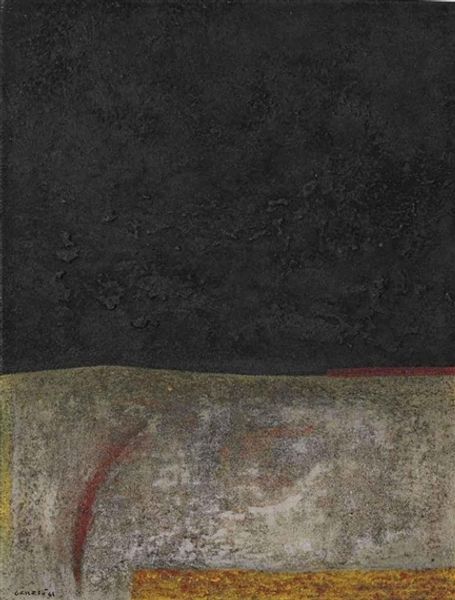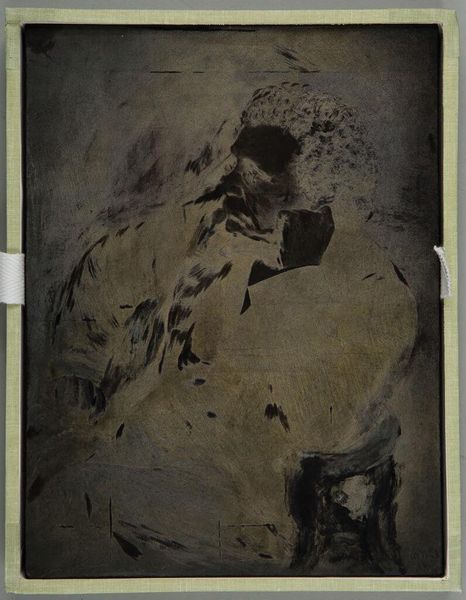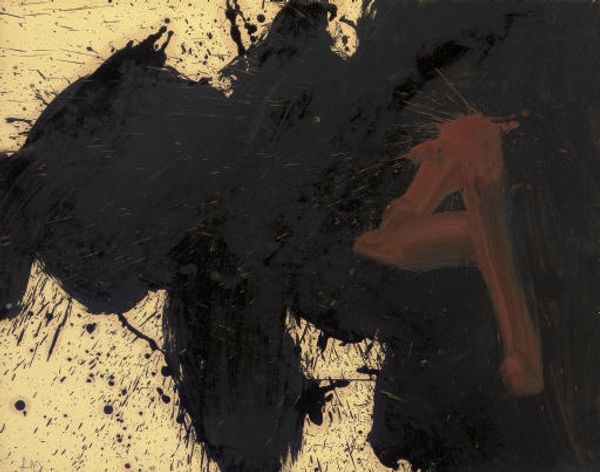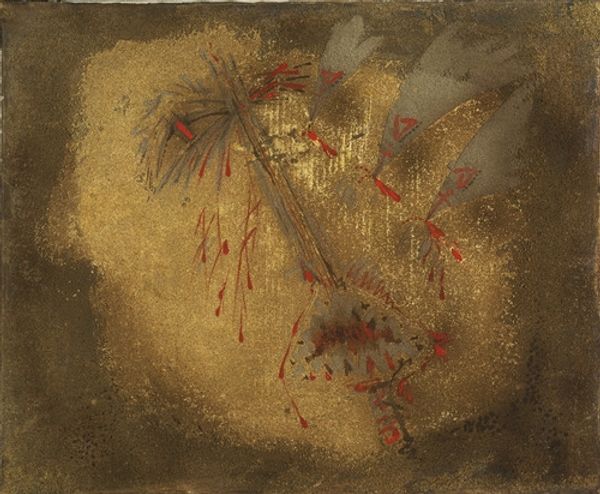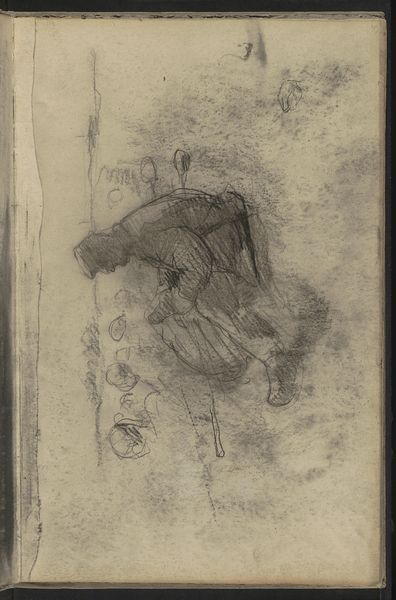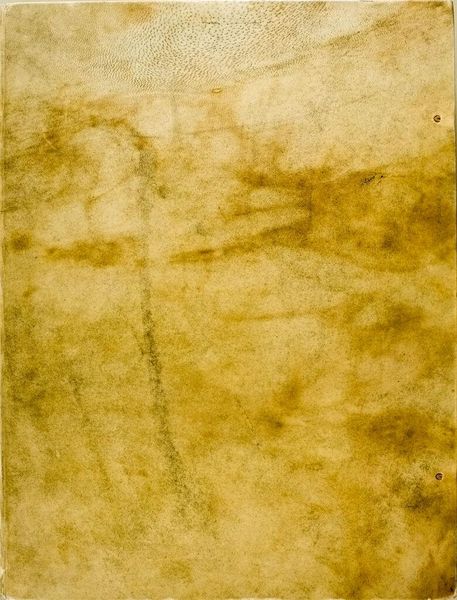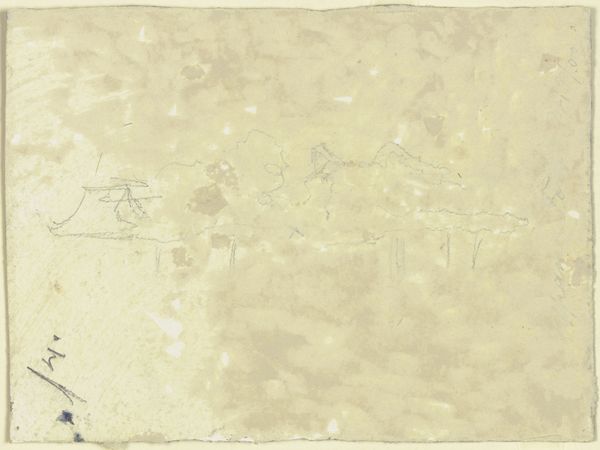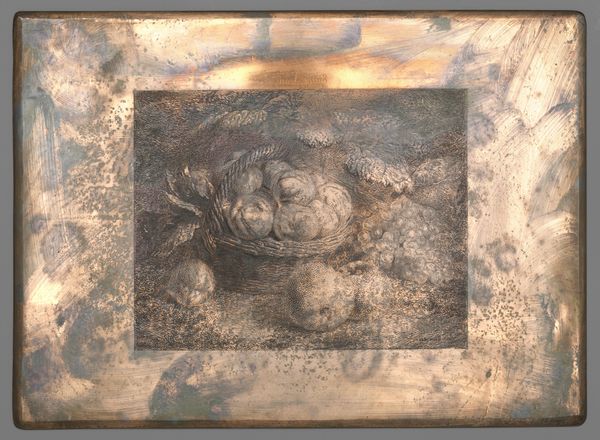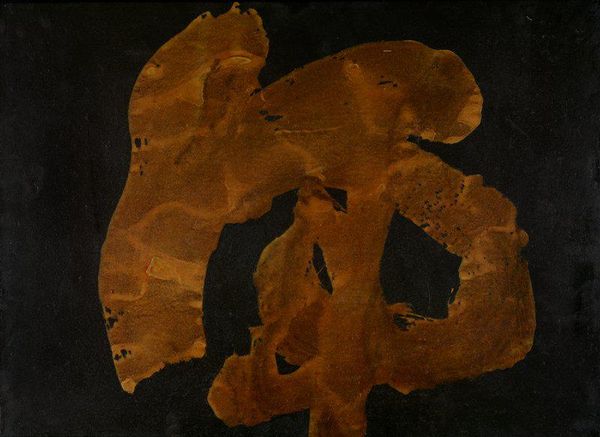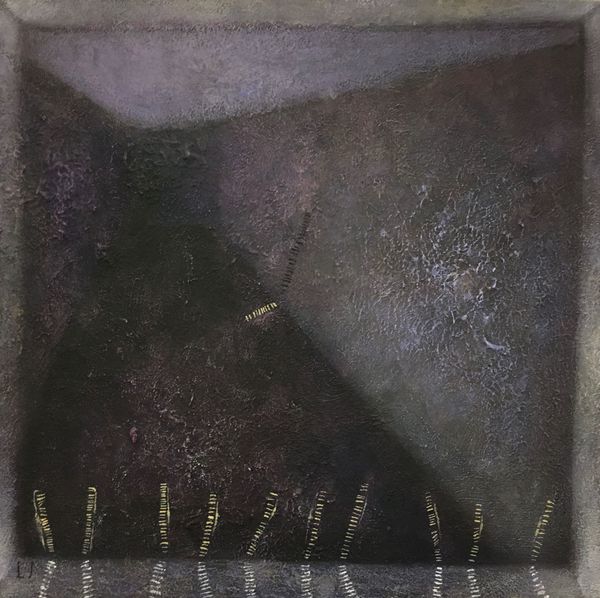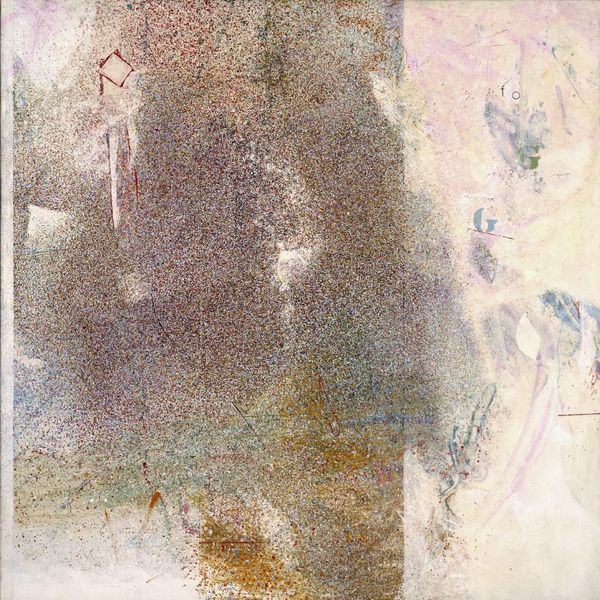
#
abstract painting
#
rough brush stroke
#
possibly oil pastel
#
underpainting
#
pastel chalk drawing
#
paint stroke
#
watercolour bleed
#
organic texture
#
mixed media
#
watercolor
Copyright: Hans Bellmer,Fair Use
Curator: Hans Bellmer’s "Child and Seeing Hands," from 1950, immediately evokes a sense of disquiet, doesn't it? There’s a hazy, dreamlike quality, a definite contrast between the texture of the background and the figure of the child. Editor: Absolutely. That haziness you describe feels almost suffocating, the muted color palette intensifies that unsettling atmosphere. A child in a muted dreamscape. It is fascinating but definitely causes me to consider questions around the repression and societal control Bellmer was engaging with post WWII, and a clear engagement with anxieties about childhood in the wake of traumatic violence. Curator: If we focus purely on form, however, the textural interplay is striking. Notice the meticulous detail in the rendering of the hands, contrasting sharply with the almost blurry rendering of the child figure, suggesting a juxtaposition that is intrinsic to surrealist form. What would you make of this interplay, formally? Editor: I'd suggest that perceived formal interplay serves to emphasize the precarity of childhood, highlighting vulnerability and a sense of being overwhelmed by adult presences or the adult world. Those very large, almost grotesque hands are visually dominant. Considering his work often centered around themes of the female body and sexuality, particularly the objectified or fragmented body, these visual elements become loaded with connotations about power dynamics. Curator: Interesting. From a purely aesthetic perspective, the texture itself lends a sort of depth to the work. There’s an organic quality, almost like the surface of weathered stone, grounding the otherwise fantastical imagery in something tangible. And, if we observe carefully, it seems the surface has had watercolour bleed, lending to this strange yet harmonious tension. Editor: Right, and it’s important to remember the period. The end of the Second World War. Considering the impact of these large oppressive “hands” on the developing "child", that tension becomes a powerful commentary on the psychological impacts of societal trauma and patriarchal structure. How might oppressive cultural forces “grasp” at or seek to “mold” the next generation? Curator: So, whether through pure form and medium or historical interpretation, it’s evident that “Child and Seeing Hands” offers a multifaceted encounter, both aesthetically and, as you point out, socially. Editor: A troubling yet thought-provoking piece that invites many potential points of engagement across art and the contemporary theory of identity, trauma, and gender.
Comments
No comments
Be the first to comment and join the conversation on the ultimate creative platform.
